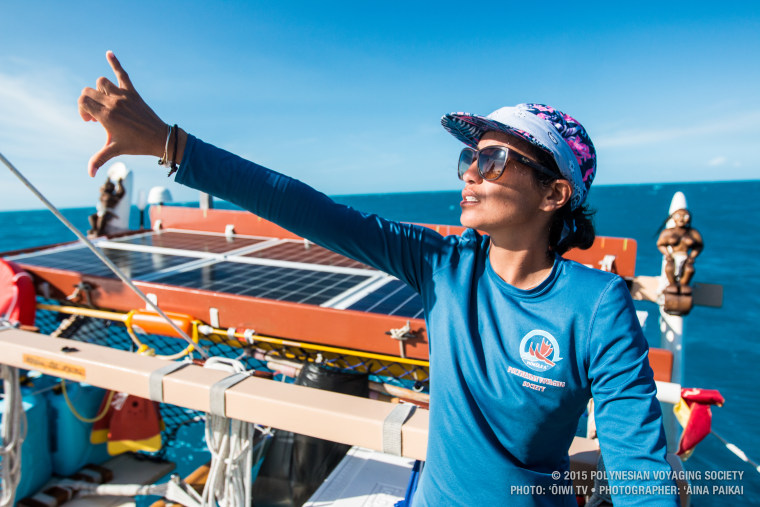After three years at sea, Hōkūleʻa, a Polynesian voyaging canoe, is preparing to make its next stop: home.
The vessel is scheduled to dock June 17 at Magic Island marina on the island of Oahu, concluding the latest leg of its Mālama Honua worldwide voyage. According to the Polynesian Voyaging Society (PVS), the Hōkūleʻa and its sister vessel, Hikianalia, have traveled more than 60,000 nautical miles combined, visiting 150 ports and 23 countries and territories to spread and engage messages of environmental preservation.

Crew members guided the Hōkūleʻa using traditional Polynesian navigational techniques of tracking stars, wind, and waves, except during emergencies or inclement weather conditions, according to the PVS. Those methods of wayfinding have been the vessel’s trademark since its first voyage in 1975, which helped launch a “renaissance” in Native Hawaiian culture and proved the viability of Polynesian voyaging traditions.
“Just having [Hōkūleʻa] sail around the world and come back in one piece is a major accomplishment because we’re a very, very small non-profit,” Clyde Namuo, Polynesian Voyaging Society CEO, told NBC News. “To raise the kind of funds we needed to take her around the world was quite a feat.”
RELATED: ‘Dignity to Our Ancestors’: Hōkūleʻa’s World-Round Voyage To Thread a ‘Lei of Hope’
PVS began preparing for the voyage six years in advance, including two years of intensive crew training for its more than 200 international rotating crew members. While on its journey, Hōkūleʻa met with foreign dignitaries and leaders including the Dalai Lama, former Secretary of State John Kerry, and former United Nations Secretary General Ban Ki-Moon.
Thousands are expected to greet the vessel with traditional Hawaiian chants upon its arrival, according to Namuo. Hawaii’s Office of Hawaiian Affairs has organized workshops to help prepare greeters.
“Just having [Hōkūleʻa] sail around the world and come back in one piece is a major accomplishment because we’re a very, very small non-profit.”
Namuo hopes that the conclusion of Hōkūleʻa’s Mālama Honua voyage will mark the beginning of a second Hawaiian cultural renaissance and spark interest in non-instrument navigation among younger people. PVS is currently working with the University of Hawaii on developing curriculum and educational opportunities on the subject, he said.
But before Hōkūleʻa can end its voyage, it must deal with one of the issues it set out to raise awareness for.
After the welcoming ceremony, the vessel will have to travel up the Ala Wai Canal and under a bridge at Ala Moana Boulevard to be boarded at the Hawaii Convention Center in Honolulu, a trip the canoe has made before. But Namuo fears that a rising sea level might make the distance between water and bridge too small for the canoe to fit this time.
“When I hear talk about climate change and not believing in it — there are some very concrete examples of islands that are being flooded because of sea level rise,” said Namuo. “And in our own backyard, trying to sail Hōkūleʻa under the bridge, we might not be able to do it this time.”
Follow NBC Asian America on Facebook, Twitter, Instagram and Tumblr.